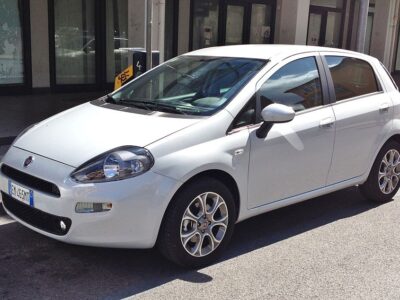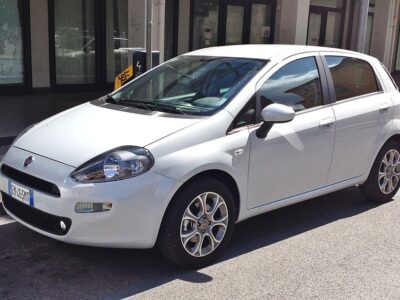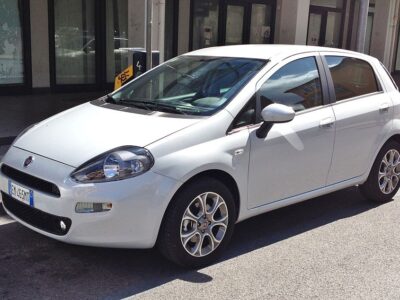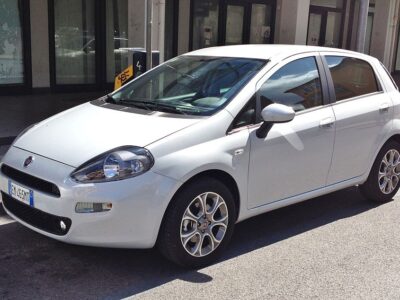
How to Deal with Fiat Punto Gearbox Bearing Failures

The Fiat Punto, a popular supermini car produced by the Italian manufacturer Fiat, has been known to experience gearbox bearing failures, causing frustration and concern among its owners. The failure of gearbox bearings can lead to significant repair costs and leave drivers stranded. Understanding the causes and symptoms of gearbox bearing failures is crucial in addressing the issue effectively. This article will provide a comprehensive guide on how to identify and deal with gearbox bearing failures in Fiat Punto models, offering practical advice and solutions to minimize the risk of such failures and keep your vehicle running smoothly.
Diagnosing and Troubleshooting Fiat Punto Gearbox Bearing Failures
When dealing with Fiat Punto gearbox bearing failures, it's essential to understand the symptoms and causes to take corrective action. The gearbox bearing plays a crucial role in the smooth operation of the vehicle's transmission system. A faulty bearing can lead to vibrations, noise, and even complete gearbox failure.
Identifying the Symptoms of Gearbox Bearing Failure
The first step in addressing Fiat Punto gearbox bearing failures is to identify the symptoms. Common indicators include unusual noises, such as grinding or whining sounds, coming from the gearbox area. These noises can be more pronounced when the vehicle is in gear or when accelerating. In some cases, the vehicle may also vibrate excessively, particularly when shifting gears. It's crucial to recognize these symptoms early on to prevent further damage to the gearbox.
Causes and Contributing Factors of Gearbox Bearing Failure
Several factors can contribute to the failure of the gearbox bearing in a Fiat Punto. Wear and tear is a common cause, as the bearing can degrade over time due to constant use. Other factors include improper lubrication, misaligned gearbox components, and excessive stress on the gearbox. In some cases, the bearing may be faulty from the outset or may have been damaged during maintenance or repair work.
| Cause | Description |
|---|---|
| Wear and Tear | Gradual degradation of the bearing over time due to constant use. |
| Improper Lubrication | Insufficient or incorrect lubrication can lead to bearing failure. |
| Misaligned Gearbox Components | Incorrect alignment can put excessive stress on the bearing, leading to failure. |
Repair and Replacement Options for Failed Gearbox Bearings
When a gearbox bearing fails, it's essential to address the issue promptly to avoid further damage. In some cases, it may be possible to repair the bearing, but often, replacement is the most effective solution. Replacing the bearing requires specialized tools and expertise, making it a task best suited to a professional mechanic. It's also crucial to identify and address any underlying causes of the bearing failure to prevent future issues.
What happens if gearbox bearings fail?

If gearbox bearings fail, it can lead to a series of problems that can have significant consequences on the overall performance and longevity of the gearbox and the machinery it is a part of. The failure of gearbox bearings can result in increased vibration, noise, and heat generation, which can further exacerbate the problem and lead to more severe damage.
Causes and Consequences of Gearbox Bearing Failure
When gearbox bearings fail, it is often a result of a combination of factors including wear and tear, inadequate lubrication, misalignment, or excessive load. The consequences of such a failure can be severe, leading to unplanned downtime, costly repairs, and potentially even safety hazards.
- Increased vibration and noise levels
- Overheating, which can lead to further damage to the gearbox and surrounding components
- Premature wear on other gearbox components, such as gears and seals
Symptoms of Gearbox Bearing Failure
The symptoms of gearbox bearing failure can vary, but typically include increased noise, vibration, and temperature. As the bearing fails, the noise can change from a gentle hum to a loud grinding or screeching sound. Vibration can also increase significantly, which can be felt through the machinery or measured using specialized equipment.
You may be interested in reading Maintaining the Fiat Punto's Battery Life and Charging System
Maintaining the Fiat Punto's Battery Life and Charging System- Unusual noises, such as grinding, screeching, or rumbling sounds
- Increased vibration, which can be detected through touch or using vibration analysis tools
- Elevated temperatures, indicating increased friction and heat generation
Prevention and Maintenance Strategies
To prevent gearbox bearing failure, regular maintenance is crucial. This includes monitoring the condition of the bearings, ensuring proper lubrication, and addressing any issues promptly. Regular inspections can help identify potential problems before they become major issues.
- Regular lubrication checks to ensure bearings are properly lubricated
- Periodic inspections to monitor bearing condition and detect early signs of failure
- Alignment checks to ensure the gearbox is properly aligned and reduce the risk of bearing damage
What is the common fault on the Fiat 500 gearbox?

The Fiat 500 gearbox is known to have some common faults that can cause problems for drivers. One of the most common issues is related to the dual-clutch transmission (DCT) used in some models. The DCT is designed to provide quick and smooth shifting, but it can be prone to faults, particularly in the early models.
Common Symptoms of Fiat 500 Gearbox Faults
The symptoms of a faulty Fiat 500 gearbox can vary, but they often include unusual noises, vibrations, and hesitation when shifting gears. In some cases, the gearbox may slip or fail to engage gears properly, which can cause the car to lose power or stall. Drivers may also experience difficulty shifting gears or notice that the gearbox is making unusual noises, such as grinding or whining sounds.
- Unusual noises when shifting gears
- Vibrations or jerking movements when accelerating
- Difficulty shifting gears or slipping between gears
Causes of Fiat 500 Gearbox Faults
The causes of Fiat 500 gearbox faults can be varied, but they often relate to the design and construction of the DCT. Some common causes include worn or damaged clutch packs, faulty solenoid valves, and software issues. In some cases, the gearbox may be damaged due to excessive wear and tear, or as a result of poor maintenance or driving practices.
- Worn or damaged clutch packs
- Faulty solenoid valves or other electrical issues
- Software issues or calibration problems
Repairing Fiat 500 Gearbox Faults
Repairing a faulty Fiat 500 gearbox can be a complex and costly process. In some cases, it may be necessary to replace the entire gearbox, which can be expensive. However, in other cases, the problem may be resolved by repairing or replacing specific components, such as the clutch packs or solenoid valves. It's also important to ensure that the gearbox is properly maintained and serviced to prevent future problems.
- Replacing the entire gearbox
- Repairing or replacing specific components
- Updating software or calibration
What is the lifespan of a Fiat Punto?

The lifespan of a Fiat Punto largely depends on various factors such as maintenance, driving conditions, and model year. Generally, a well-maintained Fiat Punto can last for a considerable amount of time. The average lifespan of a Fiat Punto is around 150,000 to 200,000 miles, which translates to approximately 10 to 15 years.
Factors Affecting the Lifespan of a Fiat Punto
The lifespan of a Fiat Punto can be influenced by several factors including maintenance habits, driving conditions, and the model year of the vehicle. Regular maintenance such as oil changes, tire rotations, and addressing any issues promptly can significantly extend the life of the vehicle.
You may be interested in reading Maintaining the Fiat Punto's Battery Life and Charging System
Maintaining the Fiat Punto's Battery Life and Charging System Common Fiat Punto Cooling System Issues and How to Fix Them
Common Fiat Punto Cooling System Issues and How to Fix Them- Regular maintenance is crucial to prevent wear and tear on the engine and other components.
- Driving conditions such as extreme temperatures, rough roads, and heavy traffic can affect the lifespan.
- The model year and generation of the Fiat Punto also play a role in determining its overall durability.
Common Issues Affecting the Lifespan
Some common issues that can affect the lifespan of a Fiat Punto include problems with the engine, transmission, and electrical systems. Addressing these issues promptly can help prevent further damage and extend the life of the vehicle.
- Engine problems such as oil leaks and coolant leaks can cause significant damage if left unaddressed.
- Transmission issues can lead to rough shifting and potentially cause the vehicle to become undrivable.
- Electrical system faults can cause a range of problems, from minor annoyances to major safety issues.
Extending the Lifespan of a Fiat Punto
To maximize the lifespan of a Fiat Punto, it's essential to follow a regular maintenance schedule and address any issues promptly. Additionally, driving habits and conditions can also be adjusted to reduce wear and tear on the vehicle.
- Regularly checking and maintaining the vehicle's fluids can help prevent engine damage.
- Avoiding extreme driving conditions such as rapid acceleration and hard braking can reduce wear on the engine and transmission.
- Keeping the vehicle clean and protected from the elements can help prevent rust and other exterior damage.
Why was the Fiat Punto discontinued?

The Fiat Punto was discontinued due to a combination of factors, primarily driven by declining sales and the need for Fiat to focus on more profitable models. The Punto, which was first introduced in 1993, had been a popular supermini in Europe, but its sales had been declining in recent years. The rise of newer, more modern competitors in the supermini segment, as well as the increasing popularity of crossover SUVs, had eroded the Punto's market share.
Declining Sales and Market Trends
The decline in sales of the Fiat Punto can be attributed to the changing market trends and consumer preferences. The supermini segment, where the Punto was competing, was becoming increasingly crowded with newer models from other manufacturers. As a result, the Punto was no longer seen as a competitive offering.
- The rise of newer models with advanced features and designs.
- Increasing popularity of crossover SUVs, which drew consumers away from supermini cars.
- Changing consumer preferences, with a greater emphasis on technology and fuel efficiency.
Shift in Fiat's Product Strategy
Fiat's decision to discontinue the Punto was also driven by a shift in the company's product strategy. The company has been focusing on expanding its presence in the crossover SUV segment, with models such as the 500X and the Tipo Cross.
- Fiat's efforts to expand its presence in the crossover SUV segment.
- The need to allocate resources to more profitable models.
- The company's plans to electrify its lineup, which required a focus on newer models.
Regulatory Pressures and Emissions Standards
The discontinuation of the Punto was also influenced by regulatory pressures and the need for Fiat to comply with increasingly stringent emissions standards. The company has been investing heavily in the development of more fuel-efficient and environmentally friendly models.
- The need to comply with EU emissions regulations, such as Euro 6d.
- The costs associated with upgrading the Punto to meet new emissions standards.
- The company's plans to expand its range of electrified and hybrid models.
Frequently Asked Questions
What are the common symptoms of Fiat Punto gearbox bearing failure?
The common symptoms include unusual noises such as grinding, whining, or humming sounds coming from the gearbox area, especially when shifting gears or when the vehicle is in neutral. Additionally, vibrations or shuddering may be felt when accelerating or decelerating. In some cases, the gearbox may also exhibit slippage or hesitation between gears.
What causes gearbox bearing failure in Fiat Punto?
Gearbox bearing failure in Fiat Punto is often caused by wear and tear, overheating, or lack of lubrication. Contamination of the gearbox oil, excessive mileage, or aggressive driving habits can also contribute to bearing failure. Furthermore, manufacturing defects or poor maintenance practices may also play a role in premature bearing failure.
You may be interested in reading Maintaining the Fiat Punto's Battery Life and Charging System
Maintaining the Fiat Punto's Battery Life and Charging System Common Fiat Punto Cooling System Issues and How to Fix Them
Common Fiat Punto Cooling System Issues and How to Fix Them Diagnosing and Repairing Fiat Punto Suspension Clunking Noises
Diagnosing and Repairing Fiat Punto Suspension Clunking NoisesCan I continue driving my Fiat Punto with a faulty gearbox bearing?
No, it's not recommended to continue driving your Fiat Punto with a faulty gearbox bearing. Continuing to drive with a failing bearing can cause further damage to the gearbox, potentially leading to costly repairs or even render the gearbox irreparable. It's best to address the issue promptly to avoid more extensive and expensive damage.
How can I prevent gearbox bearing failure in my Fiat Punto?
Regular maintenance is key to preventing gearbox bearing failure. Ensure timely gearbox oil changes, inspect the gearbox for signs of wear or contamination, and avoid aggressive driving habits. Additionally, monitoring the vehicle's performance and addressing any unusual noises or vibrations promptly can help identify potential issues before they become major problems.
If you want to know other articles similar to How to Deal with Fiat Punto Gearbox Bearing Failures you can visit the category Fiat Punto.
Deja una respuesta






More content of your interest